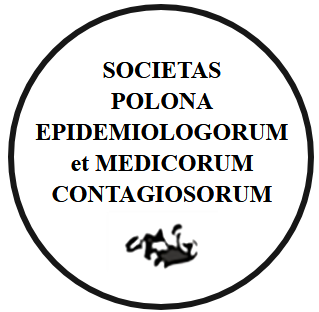RESEARCH PAPER
Syphilis in Poland in 2021-2022
1
Narodowy Instytut Zdrowia Publicznego PZH – PIB,
Zakład Epidemiologii Chorób Zakaźnych i Nadzoru
Submission date: 2025-01-30
Final revision date: 2025-02-16
Acceptance date: 2025-02-19
Online publication date: 2025-02-19
Publication date: 2024-12-31
Corresponding author
Marta Niedźwiedzka-Stadnik
Narodowy Instytut Zdrowia Publicznego PZH – PIB, Zakład Epidemiologii Chorób Zakaźnych i Nadzoru, Chocimska 24, 00-791 Warszawa
Narodowy Instytut Zdrowia Publicznego PZH – PIB, Zakład Epidemiologii Chorób Zakaźnych i Nadzoru, Chocimska 24, 00-791 Warszawa
Przegl Epidemiol 2024;78(4):512-523
KEYWORDS
TOPICS
ABSTRACT
Background: In 2020, due to the COVID-19 pandemic, there was a significant decrease in the number of detected syphilis cases in Poland, but in the following years a more than two-fold increase in new infections was observed. Objective: The aim of the study was to assess the epidemiological situation of syphilis cases in Poland in 2021-2022 in comparison to previous years. Material and methods: Analysis of the epidemiological situation was based on case-based data from reports of newly detected syphilis cases recognized in 2021-2022 years and received from doctors and laboratories. Additionally aggregated data from MZ-56 reports on infectious diseases, infections and poisoning from 2016 to 2019 sent from Sanitary Inspections to NIPH NIH – NRI was used. Also, data about treatment patients in dermatology/venerology clinics in 2016-2022 reported on MZ-14 forms and published in statistics bulletin on NIPH NIH – NRI website. Results: In 2021 in Poland 1,403 newly diagnosed syphilis cases were reported (diagnosis rate was 3.67 per 100,000), including 31 cases among non-Polish citizens. However in 2022, 44.8% more cases were diagnosed, i.e. 2,032 cases (diagnosis rate 5.38 per 100,000 inhabitants), including 75 infections of citizenship other than Polish.
Between 2021-2022, the most often syphilis cases were detected among people below 40 year old (74.2%) and among men (88.4%). Conclusions: In 2020, the number of reported a newly detected syphilis cases decreased more than by half compared to the previous year, what is probably connected with COVID-19 pandemic and action taken to limited this. However, the increase in infections observed since 2021 confirms changes in the frequency of syphilis detection in Poland observed even before the pandemic.
FUNDING
The work was carried out as part of task No. BE-1/2024
We process personal data collected when visiting the website. The function of obtaining information about users and their behavior is carried out by voluntarily entered information in forms and saving cookies in end devices. Data, including cookies, are used to provide services, improve the user experience and to analyze the traffic in accordance with the Privacy policy. Data are also collected and processed by Google Analytics tool (more).
You can change cookies settings in your browser. Restricted use of cookies in the browser configuration may affect some functionalities of the website.
You can change cookies settings in your browser. Restricted use of cookies in the browser configuration may affect some functionalities of the website.





